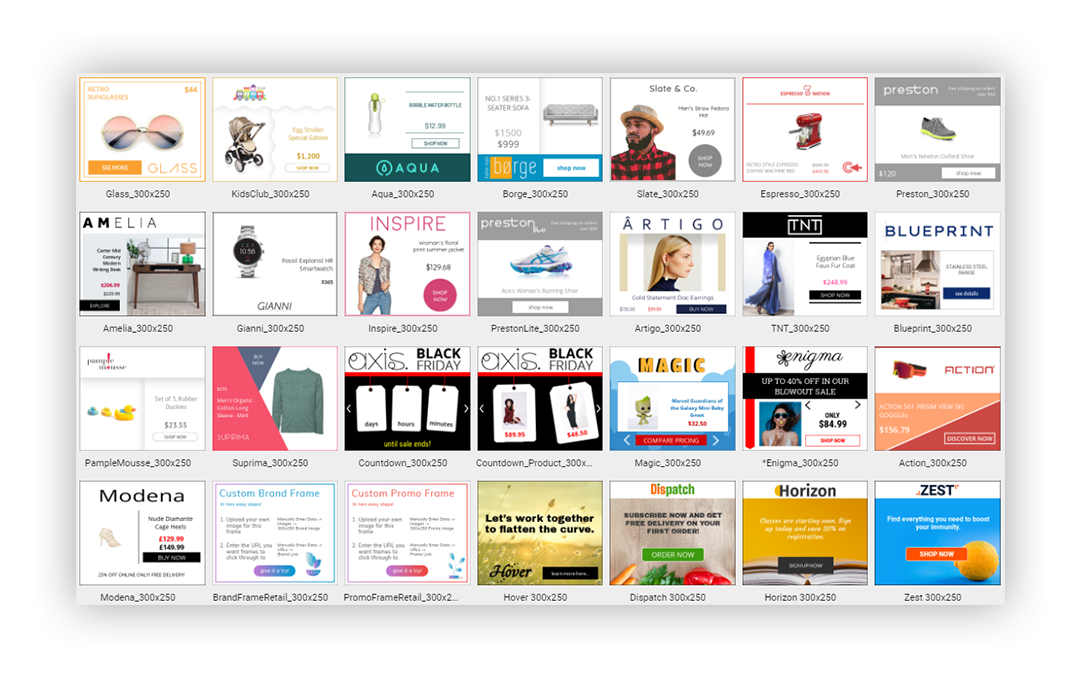Digital display ads are an important part of your overall marketing strategy. When we think ‘display ad’, we typically think about shopping ads you see on websites. But, there are actually many different types of display ads – different types of designs/layouts, sizes and placements. That said, there really are only two categories of display ads: static and dynamic. Deciding on which display ads to use will depend on your business type and advertising goals.
We’ll take a look at the differences between static and dynamic ads, when to use them and examples of each.
Static ads
Put simply, static ads are ads that don’t change. This means the images, messaging and call-to-action in the ad will not change. Static ads are typically the easiest way to get started with online advertising as the set up is straightforward, and does not require a data feed integration.
When to use static ads & why
Static ads work best for businesses looking to promote a general message or for building brand awareness. This makes sense as everyone that sees your ad will see the exact same ad. These ads also work great for those looking to reach a larger audience online.
Static ads require that you have just a single product or service offering.
Example of a static ad

Dynamic ads
Dynamic ads are ads that do change! The content within these ads will change based on a user’s interaction with your website. More specifically, the products (images) within your ad will be unique to each user and dependent on what they do on your website. There are several use cases that can be done with dynamic ads such as ads based on: last viewed products, most viewed products, product showcase, most popular products and more!
When to use dynamic ads & why
Dynamic ads should be used by businesses looking to target customers in the lower funnel. This means customers that are ready to purchase or convert. These type of ads are also best suitable for businesses that have multiple product or service offerings.
Example of a dynamic ad


